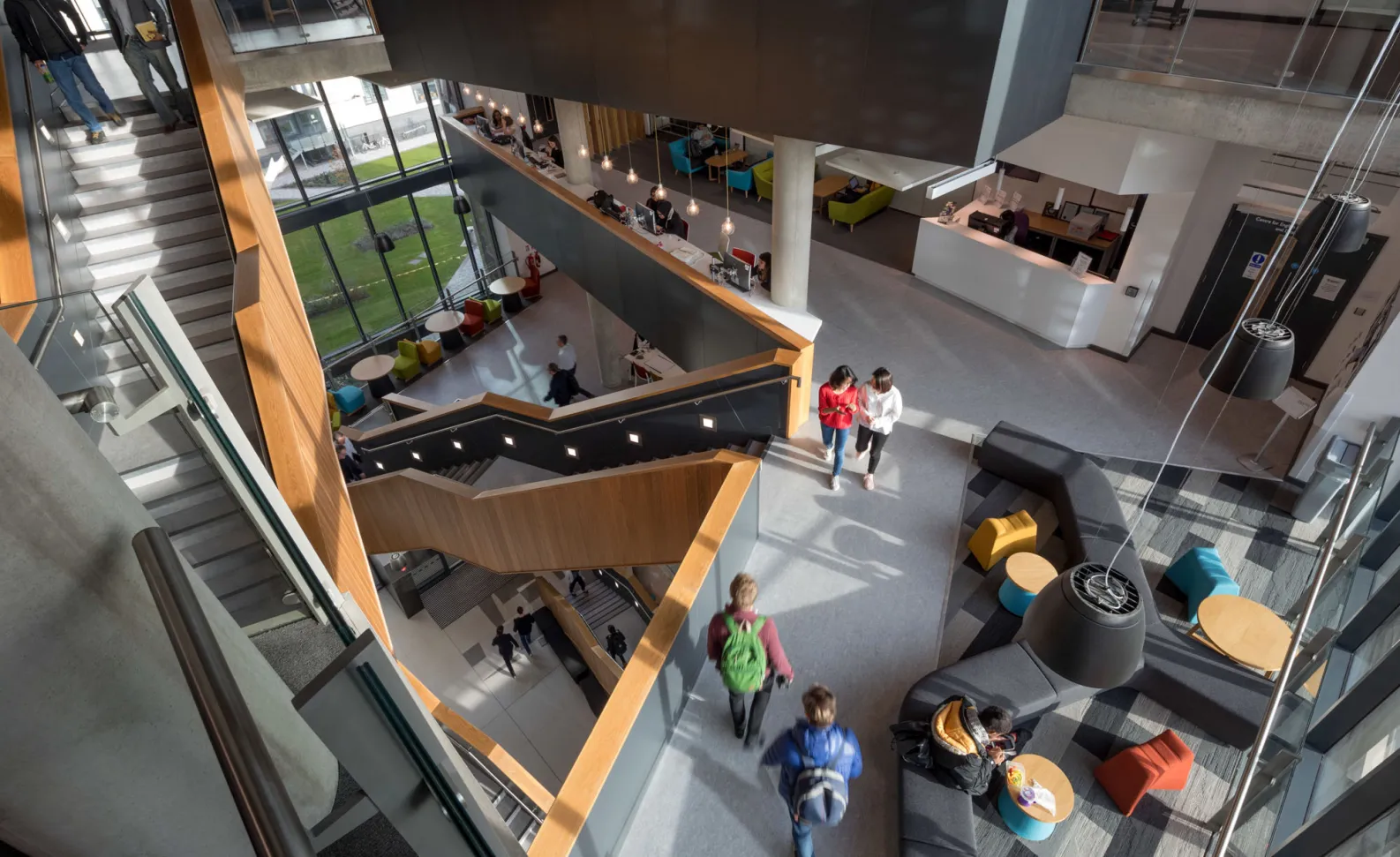Insight
Collaboration key to creating university campuses of the future
18 Oct 2023
As higher education, like all sectors, seeks to futureproof its estates, universities must consider how best to rationalise its strategies to deliver on student expectations and sustainability goals. Catherine Sawley, principal project manager at multidisciplinary consultancy Pick Everard, discusses the need for relationships built on trust to deliver this rationalisation work safely – particularly where demolition forms part of the picture.
Universities are unique in their set ups, each being shaped by its location, demographics and research specialisms. But it’s also worth noting that they are also businesses, so having the facilities that attract both students and investment in research projects is critical to their success. Without the right environments, neither will come.
So, whether improving teaching facilities, working towards net zero goals or adding to their estates, asset rationalisation and building re-use is on the agenda for every university in the country. In many cases, this includes an element of demolition – a tricky undertaking in areas of high footfall like university campuses.
Health and safety
The ideal scenario for demolition is having an empty building, with plenty of low footfall space around it, and a clear understanding of the building’s make-up. However, this demolition utopia is not always achievable. Sites may be tight, busy and sometimes the process of prepping a building for demolition uncovers new hurdles – for example discovery of asbestos in older buildings.
The obvious challenge is how to approach the work safely for both those involved in carrying out the work, and those using the space around it. This is even more challenging for universities, considering they are not educational facilities closed off in the same way as schools. Indeed, many city campuses can be just as busy with the general public as with students, particularly if they act as thoroughfares between different parts of the city.
A prime example of this is work we are currently undertaking at Bangor University. The demolition of the 1970s-built Alun Roberts Tower and adjoining building is currently underway, which will create space for new development in the future.
The work here has included clearance of loose items, a soft strip of the building and the main demolition, which is due to complete later in the year. Due to its position in the middle of campus, two demolition methodologies have been deployed to ensure safety – taking a floor-by-floor approach from the top down, until reaching a height suitable for ‘from ground’ demolition. From there, the foundations will be broken, and the site remediated.
The work has required careful management to secure the immediate work site and coordination with a whole host of stakeholders, going beyond just staff and students. For example, engagement with utilities providers has been needed due to a substation attached to the building, making sure that no onward disruption or damage was caused by our activity.
The wider picture
Building demolition can include the need to decant existing provisions, often as quickly as possible. In the case of our work for Bangor University, this has seen several departments needing to be repositioned elsewhere, including creating labs for specific teams. So, wider planning and coordination is required to find the best place for these services, carry out any upgrades or building works needed, communicate the plans and execute them safely. This is all to ensure that the university does not go without that particular provision for an amount of time, or plans are in place to ensure an appropriate timeline is set – the same way work would not leave a restaurant without a kitchen.
A detailed and strategic communications plan plays an important role. This ensures that all parties are completely clear on what is being done when, what it means for them, and any other relevant information. This includes providing relevant newsletters and communications to local residents, businesses, students and staff, to ensure they are informed of important measures taken such as temporary road closures for example, to enable better forward planning.
For projects like the Alun Roberts Tower where services have been decanted and relocated, this helps build the all-important trust-based relationships between project delivery teams, the client and wider stakeholders that are critical to success.
Ageing estates
It’s important to remember that universities hold some of the most varied building stock across their estates, covering residential, traditional and clinical teaching space, science laboratories, retail, leisure and more. And older universities may even have listed buildings under their jurisdiction too.
The education sector is well aware of the problems currently being faced with buildings that have aged beyond their intended design lifespan, with RAAC continuing to dominate headlines in the school space. Even where buildings haven’t ‘aged out’ from a practical or materials point of view, the modern world now has sustainability demands to negotiate, along with different modern standards of teaching requirements that buildings may simply no longer be able to meet.
Unfortunately, funding also often makes it difficult to take the ideal approach of masterplanning the full campus to ensure the best flow and use of space. Projects are often approached in bite sized pieces, so again trust and relationships are important, ideally bringing back delivery teams for continuity across these projects that eventually add up to a whole.
Built environment specialists like ourselves are able to help universities tackle the scale and variety of challenges ahead. Our own multidisciplinary nature allows us to provide all manner of support, covering everything from feasibility through to design, cost management and project delivery.
Ultimately – as is the case for many sectors – whether demolition is involved or not, robust processes and relationships built on trust will be the answer to delivering the campuses of the future, meeting student and staff expectations wrapped up with achieving net zero.
Education
We are privileged to work on hundreds of education projects that are improving the lives of children and young adults from pre-school, right through to higher education.
